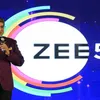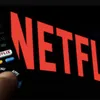OTTs win over multiplexes in lockdown as Amazon Prime Video sets off ‘direct-to-digital’ in India
The coronavirus lockdown is bringing about paradigm shifts in India’s entertainment industry, with OTTs making the most of it. Amazon Prime Video’s ‘direct-to-digital’ releases have polarised the industry.
Last week, Amazon Prime Video sent ripples through India's entertainment industry by announcing the premiere of Shoojit Sircar’s Gulabo Sitabo (starring Amitabh Bachchan and Ayushmann Khurrana) on its platform on June 12.
The film was originally slated to release on April 17, but the nationwide lockdown pushed it towards uncertainty. As theatres and multiplexes shut down, releases were halted, and films already running were also pulled out.
As a result, producers and content studios have been increasingly pinched for money. Releases bring in revenues, which in turn, help clear production costs. Every single day of delay means additional costs incurred by the film studios.
This has prompted producers to look towards OTT platforms for direct-to-digital releases. As chorus around OTT premiers grew, the Multiplex Association of India (MAI) urged producers and studio partners to honour the “exclusive theatrical window” of a film — a 60-day gap between theatrical and OTT releases.
“We urge all studios, producers, artistes and other content creators, to kindly respect the exclusive theatrical window, which has been a time-tested industry practice, agreed to by all stakeholders, not just in India, but even globally, for several decades,” MAI said.

Photo: Amazon Prime Video
However, things panned out differently.
Within a week of MAI’s letter, Amazon Prime Video went on to not only announce the premiere of Gulabo Sitabo, but also revealed that it has acquired six other Indian films for its ‘direct-to-digital’ slate. These include the much-awaited Shakuntala Devi biopic starring Vidya Balan, and five regional language films that will premier exclusively on Prime Video in the next three months across 200+ countries.
Vijay Subramaniam, Director and Head, Content, Amazon Prime Video India, says, “We believe in listening to what our consumers want and working backwards from there. This belief is the genesis of our latest offering. It is the first step in our endeavour to bring superior cinematic experiences to our customer’s doorstep.”
Following Amazon Prime Video, Netflix announced on Tuesday that it would be premiering Anurag Kashyap's directorial Choked: Paisa Bolta Hai on June 5.
Even though a direct-to-digital release isn’t unheard of globally — in 2019, Martin Scorsese bypassed a theatrical release and ‘dropped’ The Irishman straight onto Netflix — in India, it was always about maintaining status quo. Hence, Amazon’s decision has opened a can of worms that stands to affect all stakeholders in showbiz — OTTs, film exhibitors, multiplexes, producers, studios, and even viewers.
Some positively, some otherwise. “This is a very touchy topic,” a media consultant told YourStory, “We’ll have to wait and watch before commenting on it.”

Photo: Netflix India
What it means for OTT platforms
Until now, OTT platforms had been dubbed the poorer cousin of theatres when it came to films. The industry always romanticised big-ticket, event-led releases and advocated the joy of watching cinema on the 70 mm screen.
Oftentimes, OTTs would end up being the dumping ground for inferior quality content (that gets pulled out of theatres fast), and even unreleased titles. But by signing up Bollywood A-listers like Bachchan, Khurrana, and Balan, Amazon Prime Video may have turned the tide in one fell swoop. In fact, director Sircar called it “the dawn of a new era for Indian entertainment”.
A direct OTT release takes Indian films global instantly to every market that Amazon Prime Video operates in. It means more eyeballs, more audience demand, and eventually, more investments in the domestic film industry.
Gaurav Gandhi, Director and Country General Manager, Amazon Prime Video India, says, “Prime Video with its deep penetration in India, with viewership across over 4,000 towns and cities, and its worldwide reach in more than 200 territories, will give a large global release footprint to these films.”

Photo: Aditya Ranade
Not only this, but OTT releases also cater to the pent-up demand in audiences that have been deprived of new film releases for two months and counting. At the same time, it allows viewers to enjoy fresh content from the safety of their homes and fulfils all social distancing norms that are in place now.
Interestingly, not just Prime Video and Netflix, but even ZEE5 India is premiering Nawazuddin Siddiqui-Anurag Kashyap starrer Ghoomketu on May 22. The film is slated for an Eid release on Friday, almost mirroring a theatrical trend.
In fact, ZEE5 has lined up 15 direct-to-digital releases for FY21. The homegrown OTT operator is positive that consumer habit formation and behaviour post the pandemic will influence this trend in a major way.
Aparna Acharekar, Programming Head, ZEE5 India, tells YourStory,
“This is a consumer-centric industry where the audience drives the trends as well as growth. The OTT sector in India is a steadily growing market and is one segment in the entertainment industry which has done significantly well in the current situation. Given the scenario, OTT provides the relief and tremendous reach that filmmakers and producers need to keep the show running.”

Photo: ZEE5 India
ZEE5 claims to have recorded an 80 percent growth in subscription and a 92 percent surge in movie streaming within the first month of the lockdown. “The winds have shifted” in the favour of a digital world for entertainment, according to the company. “The numbers reflect the immense potential and reach of this segment,” says Aparna.
She adds, “Digital releases are convenient to schedule and are promoted as extensively as a theatrical release. Economically too, digital rights are something which production houses can benefit further from and for platforms, these convert into new subscribers and streaming hours.”
Direct-to-digital releases can not only grow app downloads, but also convert non-paid users to premium ones, and even bring in new unique users to the OTT platforms. Additionally, more fresh films will expand their content libraries, make them more diverse, and open up new avenues for a film’s monetisation.
It could even fetch top-tier advertisers and brands to OTT platforms in the long run.
New revenue models and strategies
Almost all stakeholders in showbiz reckon that digital film premiers will pave the way for newer business models and content strategies.
One of the things OTT operators are deliberating right now is the pay-per-view (PPV) model, which hasn’t seen much success in India so far. PPV, where users pay for only one title at a time, not only democratises content access, but also generates a steady stream of revenue and audience interest for the OTTs.
However, barring Google Play Movies and YouTube, no video streaming platform in India currently offers PPV. Apple TV allows users to watch non-Apple content on a single-title basis, but only if they already have an Apple TV subscription.
Hence, PPV exists only in a limited form. That could change going ahead.
“Movies are a great source of customer acquisition as well as retention. We do expect newer revenue models to emerge in the near future, one among which could definitely be PPV," says Aparna.

However, PPV brings in its own set of challenges.
Mahendra Soni, Co-Founder and Director of SVF (eastern India’s biggest film studio), tells YourStory, “We tried releasing films through PPV. But the single biggest threat to PPV is piracy. Otherwise, I think that’s the best model.”
SVF also operates Hoichoi, one of the largest regional language OTT platforms, accessible in India and Bangladesh. Despite the availability of its own OTT service, SVF has held back two big-ticket releases since the lockdown.
This is because there is a lurking fear among producers that regional language films will not fetch the premium rates that Bollywood titles do.
Programming heads say a direct-to-digital release that was already slotted for a theatrical release will be valued differently and higher. This means when OTTs shell out more money for acquiring new films, it can impact their content budgets for other projects, including their own original shows. The grapevine suggests that both Amazon Prime Video and Netflix are slashing budgets and re-negotiating deals that were closed pre-lockdown.

Photo: Hoichoi
OTT executives believe that in the long run, the mode of a film’s release will depend on its cast, content, and production budget.
SVF’s Soni explains, “If I have a big cast, popular songs, and a well-mounted film, I would definitely like to market it to maximum people, have as many brand associations as possible, do dozens of TV integrations, and create that Friday buzz to get an opening. On the contrary, if I have a non-star cast film with strong content, I might end up directly on OTT as I would get the desired viewers over a period of time with strong word of mouth.”
“We are not going to release straight on OTT just because it’s a trend. If we have a good business case, then why not?” he adds.
Theatrical biz – where is it headed?
India is estimated to have 9,600 screens, including 3,000-odd multiplex ones. Theatricals (also known as box office) still account for the largest share (50-55 percent) of a film’s overall revenues, according to a FICCI-KPMG study.
But, the slow expansion of physical screens and a parallel surge in OTT consumption is slowly yet surely shifting the balance towards digital. In 2019, films’ digital revenues grew by nearly 30 percent, while theatricals were up less than 15 percent.
With the pandemic expected to put brakes on the launch of new screens because of stringent sanitisation and social distancing guidelines, multiplexes and film exhibitors have their task cut out.
In a recent interaction with YourStory, PVR Founder and Chairman Ajay Bijli said, “Our business operates in confined spaces. So, we were the first ones to be told to close down and will probably be the last ones to open (along with food courts and malls). As a businessman, you can forecast volatility, but you can never forecast a zero-revenue situation. We have shut all our theatres since March 11, and there is no cash flow.”

Photo: PVR
Even though he is hopeful that a line-up of “brand new films” will bring audiences back to the theatres, PVR isn’t too happy about OTT premiers.
In a recent media statement, Kamal Gianchandani, CEO, PVR Pictures, said,
“We are disappointed with producers deciding to go straight to streaming platforms. We were hoping that they would accede to our request to hold back their film’s release till cinemas reopen. That said, this is not the first time films are being premiered on streaming platforms. Cinema exhibition has regularly faced competition from new emerging distribution platforms over the last many years, and it has continued to enjoy cine-goers’ patronage and affinity.”
Meanwhile, PVR's peer INOX has reacted more strongly against direct-to-digital releases, calling it “alarming and disconcerting”. It has even warned producers and studios of retributive measures.
Surely, this polarisation won’t die down soon, not until the pandemic is over. But when it does, it may have disrupted many long-existing business models.
ZEE5’s Aparna puts it aptly, “With the probability of restrictions on outdoor activities and gatherings continuing for quite some time, direct-to-digital releases is the best option for producers. This trend is a necessity given the current circumstances. But in future, we hope to nurture a healthy relationship between OTT platforms and theatres by providing good content to everyone.”
Edited by Saheli Sen Gupta












